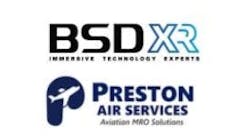Veryon Defect Analysis (previously known as ATP's ChronicX) automates the identification of chronic aircraft defects, streamlines recurring defect resolution management, and enhances defect analysis.
“The system is designed to optimize aircraft uptime by significantly reducing chronic and repeat defects by 33 percent, decreasing unscheduled part removal rates by 20 percent, and cutting down on cancellations and delays by 10 percent,” said Mike Profit, Veryon Chief Operating Officer.
Proactively, Veryon Defect Analysis scans for recurring issues and previously unnoticed defects across individual tail numbers and entire fleets. The platform identifies emerging failure modes before they become critical. Technicians and engineers can receive customized alerts, fostering prompt and precise responses to technical anomalies.
The latest features of Veryon Defect Analysis offer a comprehensive view of maintenance history, employ AI and machine learning for diagnostic assistance, facilitate first-time problem resolution, and eliminate the use of unnecessary parts and temporary fixes. The collaborative aspect of the system enhances real-time experience sharing and expert consultation within the specific aircraft context.
Here are some examples illustrating how Veryon Defect Analysis works:
- Technician “at the gate” – The solution informs whether to defer maintenance, attempt a reset, or delve into further research. It provides immediate access to an aircraft's tail history, key defect information, minimum equipment list (MEL) details, fault descriptions and potential causes.
- Technician “in the hangar” – Veryon Defect Analysis facilitates thorough research into faults and tail history, connecting users with relevant system theory, aircraft maintenance manuals (AMM), and other technical publications, uncovering all potential causes and associated defects.
- Maintenance Operations Control – The system is adept at identifying more repeated problems and catching them earlier. It uses advanced natural language processing (NLP) and clustering algorithms to flag repeat defects automatically.
Veryon Defect Analysis empowers maintenance and reliability teams by ingesting data from managing maintenance report (MIREPs) and pilot reports (PIREPs), clustering recurring defects, leveraging NLP and machine learning to bolster data quality and reliability, standardizing terminology to pinpoint hard-to-find recurring defects, and streamlining daily operations to facilitate quick data analysis.
First introduced in 2010, Profit said the web-based solution is deployed across 25% of the world's global fleet and is the preferred choice for a spectrum of aviation stakeholders, including top-tier major airlines, regional carriers, and cargo transporters.
“The unparalleled efficiency and proactive capabilities of Veryon Defect Analysis redefine aircraft maintenance. Its impact on cost savings, operational reliability, and safety is a testament to its revolutionary approach to managing aircraft health. It’s not just an advancement in technology; it's a leap forward in operational excellence for the aviation industry,” said Profit.



